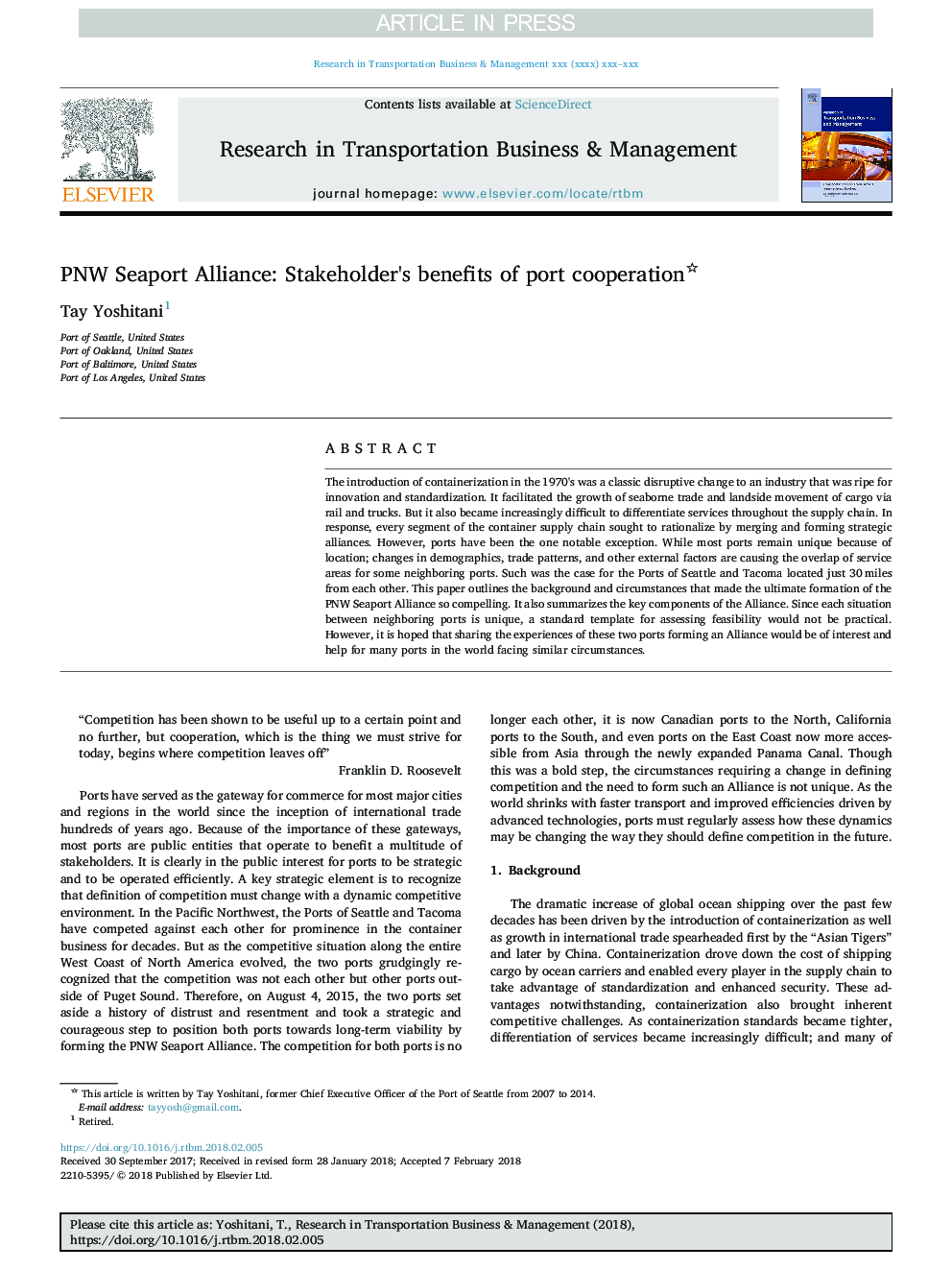| Article ID | Journal | Published Year | Pages | File Type |
|---|---|---|---|---|
| 7410134 | Research in Transportation Business & Management | 2018 | 4 Pages |
Abstract
The introduction of containerization in the 1970's was a classic disruptive change to an industry that was ripe for innovation and standardization. It facilitated the growth of seaborne trade and landside movement of cargo via rail and trucks. But it also became increasingly difficult to differentiate services throughout the supply chain. In response, every segment of the container supply chain sought to rationalize by merging and forming strategic alliances. However, ports have been the one notable exception. While most ports remain unique because of location; changes in demographics, trade patterns, and other external factors are causing the overlap of service areas for some neighboring ports. Such was the case for the Ports of Seattle and Tacoma located just 30â¯miles from each other. This paper outlines the background and circumstances that made the ultimate formation of the PNW Seaport Alliance so compelling. It also summarizes the key components of the Alliance. Since each situation between neighboring ports is unique, a standard template for assessing feasibility would not be practical. However, it is hoped that sharing the experiences of these two ports forming an Alliance would be of interest and help for many ports in the world facing similar circumstances.
Related Topics
Social Sciences and Humanities
Business, Management and Accounting
Business and International Management
Authors
Tay Yoshitani,
